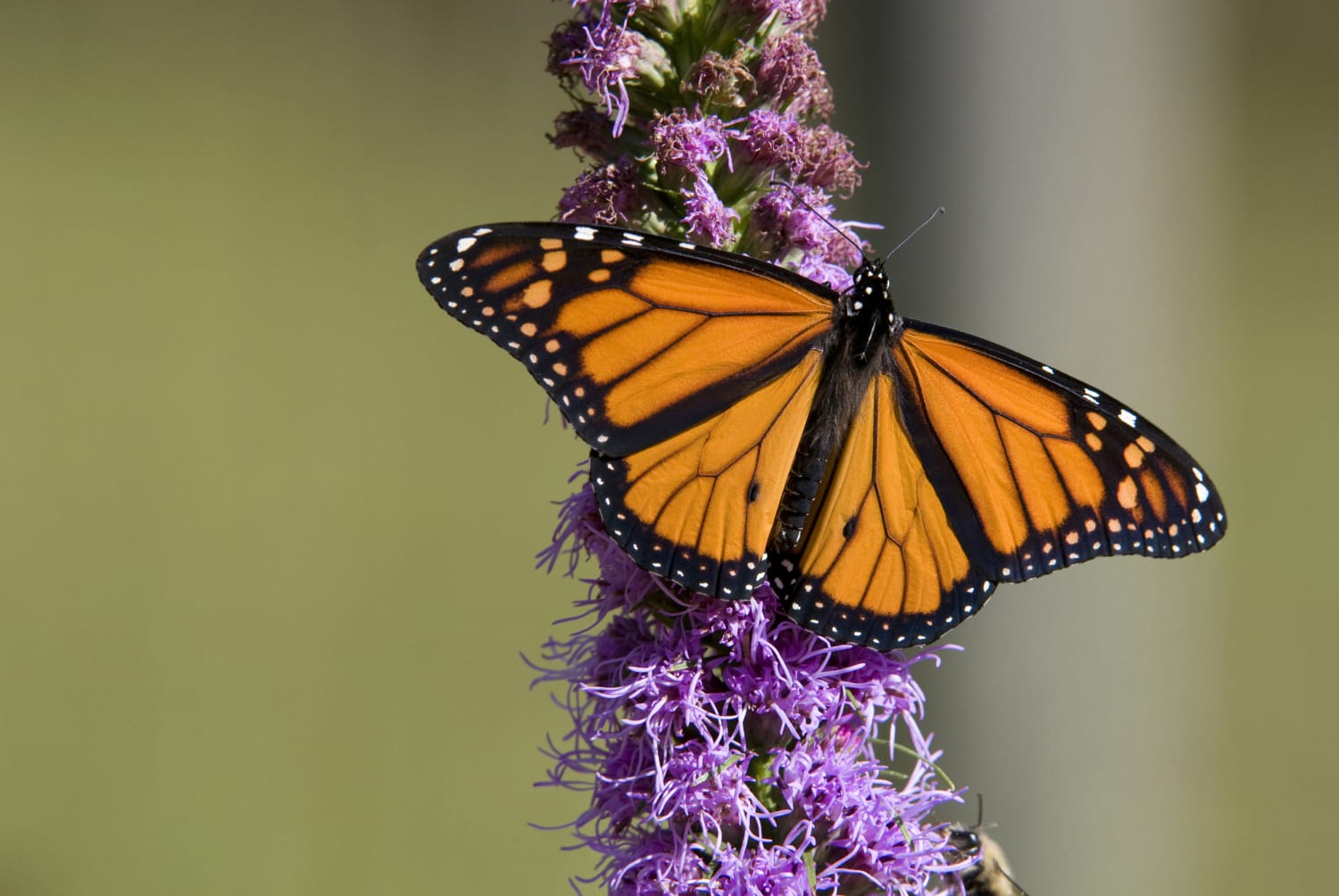
Ever wondered why monarch butterflies are such a big deal? Well, you're about to find out! These winged beauties are more than just a pretty sight fluttering in your garden. They're marvels of nature, embarking on one of the most epic migrations known to insects. But hey, there's a lot more to these creatures than meets the eye. From their jaw-dropping journey to their role in ecosystems, monarchs are downright fascinating. So, buckle up! We're diving into the world of monarch butterflies, uncovering 20 mind-blowing facts that'll make you see these insects in a whole new light. Ready to get your wings flapping with excitement? Let's flutter into the mesmerizing world of monarchs and discover what makes them truly extraordinary!
Key Takeaways:
- Monarch butterflies make an amazing two-way migration, traveling thousands of miles using air currents and thermals. Conservation efforts are crucial to protect them from habitat loss and climate change.
- Monarchs play a vital role in ecosystems as pollinators, but they face threats like habitat loss and climate change. Everyone can help by planting milkweed and reducing pesticide use.
Understanding Monarch Butterflies
Monarch butterflies, known for their striking orange and black wings, embark on one of nature's most incredible migrations. These insects, weighing less than a gram, travel thousands of miles from North America to central Mexico every year. But there's more to these creatures than their migratory patterns.
-
Monarchs are the only butterfly species to make a two-way migration, similar to birds. This journey can span up to 3,000 miles.
-
They use a combination of air currents and thermals to travel long distances. This method conserves their energy, allowing them to fly for hours without needing to rest.
The Life Cycle of Monarch Butterflies
The life cycle of a monarch butterfly is a fascinating process that involves four stages: egg, larva (caterpillar), pupa (chrysalis), and adult. Each stage plays a crucial role in the development and survival of the species.
-
Monarch butterflies lay their eggs exclusively on milkweed plants. Milkweed serves as a food source for the larvae once they hatch.
-
It takes about 30 days for a monarch to go from egg to adult. This rapid transformation is essential for the continuation of their migratory cycle.
Threats to Their Survival
Despite their beauty and ecological importance, monarch butterflies face several threats that endanger their populations. Habitat loss, climate change, and pesticide use are among the most significant challenges they encounter.
-
In recent years, the monarch population has declined by approximately 90%. Conservation efforts are crucial to prevent their potential extinction.
-
Milkweed plants, vital for monarch reproduction, are being destroyed due to agricultural practices and urbanization. This loss of habitat directly impacts their ability to breed and survive.
Monarch Butterflies and Ecosystems
Monarch butterflies play a vital role in the ecosystems they inhabit. As pollinators, they help in the reproduction of many types of flowers and plants, contributing to biodiversity.
-
Their migration is an important ecological event that supports the health of various habitats across North America.
-
Predators find monarchs distasteful due to the toxic compounds they accumulate from milkweed plants. This natural defense mechanism protects not only monarchs but also other species that predators may mistake for them.
Conservation Efforts
Efforts to conserve monarch butterflies and their habitats are underway across North America. These initiatives aim to protect the species and ensure their migration can continue for generations to come.
-
Planting milkweed and nectar plants is a simple yet effective way individuals can contribute to monarch conservation.
-
Educational programs and citizen science projects help raise awareness about the importance of monarchs and how to protect them.
The Cultural Significance of Monarch Butterflies
Monarch butterflies hold cultural significance for many people. In Mexican culture, they are symbols of the souls of the deceased, returning to earth during the Dia de los Muertos (Day of the Dead) celebration.
-
Their arrival in Mexico coincides with this celebration, adding a layer of spiritual meaning to their migration.
-
Indigenous groups in North America also recognize monarchs as symbols of change, transformation, and endurance.
The Science Behind Their Navigation
Scientists have long been fascinated by how monarchs navigate during their migration. Recent studies have shed light on this mystery, revealing the complexity of their navigational skills.
-
Monarchs use the sun as a compass to maintain their southward direction during the day. At night, they rely on the Earth's magnetic field to guide them.
-
Their antennae contain light-sensitive cells that help them adjust their flight path based on the position of the sun.
The Future of Monarch Butterflies
As we continue to learn more about monarch butterflies, their challenges, and their importance to ecosystems, it becomes clear that protecting them is not just about saving a single species. It's about preserving the intricate web of life that supports us all.
-
Climate change poses a significant threat to their migratory patterns, potentially disrupting their life cycle and affecting their survival.
-
Conservationists are optimistic that with continued efforts and public support, the decline in monarch populations can be reversed.
-
Every individual can play a role in monarch conservation, whether by planting native plants, reducing pesticide use, or participating in citizen science projects.
-
The story of monarch butterflies is a powerful reminder of resilience, adaptation, and the interconnectedness of all living things.
-
By understanding and supporting their journey, we contribute to a larger effort to protect our planet's biodiversity.
-
The monarch butterfly, with its incredible migration and role in ecosystems, continues to inspire and teach us about the beauty and complexity of nature.
A Final Flutter on Monarch Butterflies
Monarch butterflies, with their striking orange and black wings, are more than just a pretty sight. They're marvels of nature, embarking on one of the most remarkable migrations known to science. Understanding these creatures helps us appreciate the delicate balance of our ecosystem. From their unique life cycle to their incredible journey across continents, monarchs are a testament to nature's complexity and resilience. Protecting their habitats is crucial, not just for their survival but for the health of our planet. So, next time you spot a monarch, remember, you're witnessing a tiny but mighty traveler on an epic quest. Let's ensure these beautiful insects continue to grace our skies by supporting conservation efforts. Monarchs aren't just butterflies; they're symbols of hope and endurance in the face of challenges.
Frequently Asked Questions
Was this page helpful?
Our commitment to delivering trustworthy and engaging content is at the heart of what we do. Each fact on our site is contributed by real users like you, bringing a wealth of diverse insights and information. To ensure the highest standards of accuracy and reliability, our dedicated editors meticulously review each submission. This process guarantees that the facts we share are not only fascinating but also credible. Trust in our commitment to quality and authenticity as you explore and learn with us.


